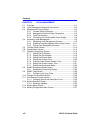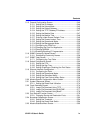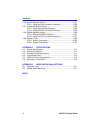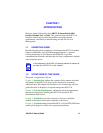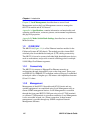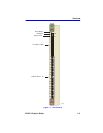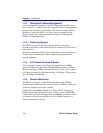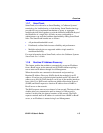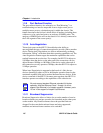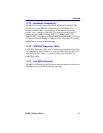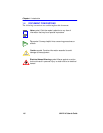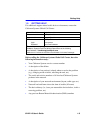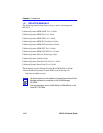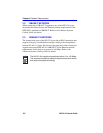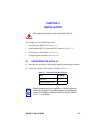
Chapter 1:
Introduction
1-6 6H122-16 User’s Guide
1.3.9 Port Redirect Function
The port redirect function, also referred to as “Port Mirroring,” is a
troubleshooting tool used to map traffic from a single source port or
multiple source ports to a destination port(s) within the chassis. This
feature functions at the bit level, which allows all packets, including those
with errors, to be copied and sent to an analyzer or RMON probe. The
analyzer or RMON probe will see the data as if it is directly connected to
the LAN segment of the source port(s).
1.3.10 Auto-Negotiation
Twisted pair ports on the 6H122-16 module have the ability to
auto-negotiate the type of connection required to provide a link to another
device. During Auto-Negotiation, two devices automatically exchange
information “telling” each other what their operating capabilities are. The
Auto-Negotiation feature targets the maximum capabilities that can be
reached between the two devices. For example, the 6H122-16 adjusts to
100 Mbps when the device on the other end of the connection can also
adjust between 10 Mbps or 100 Mbps. If the device on the other end of
the connection can only operate at 10 Mbps, then the 6H122-16 adjusts to
10 Mbps operation.
When Auto-Negotiation is supported at both ends of a link, the two
devices dynamically adjust to full or half duplex operation based on the
maximum capability that can be reached between the two devices. If the
device connected to the 6H122-16 cannot auto-negotiate, the 6H122-16
interface operates according to the capabilities of the other device.
1.3.11 Broadcast Suppression
Broadcast Suppression allows a limit to be set on the number of receive
broadcast frames per port/per second to be forwarded out the other ports
on the module. Any broadcast frames above the specified limit are
dropped. In the event that broadcast frames are being suppressed,
multicast and unicast frames continue to be switched.
NOTE
All ports support standard Ethernet, standard full duplex
operation, and Fast Ethernet. Ports 1 through 14 do not
support Fast Ethernet in full duplex operation. However, ports
15 and 16 do support full duplex Fast Ethernet.



